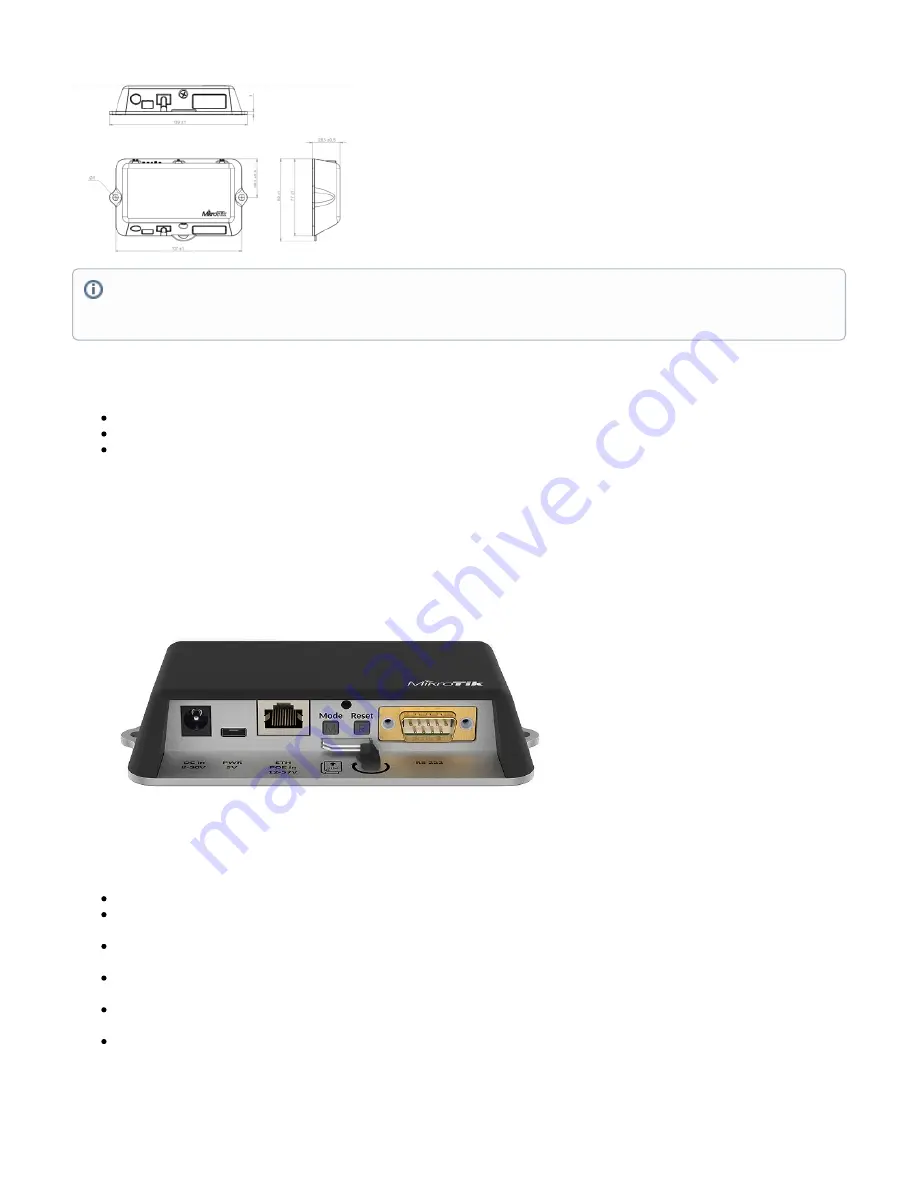
1.
2.
3.
Powering
Direct-input power jack (5.5 mm outside and 2 mm inside, female, pin positive plug) accepts 8-30 V DC.
microUSB port accepts 5 V powering.
Ethernet port accepts passive and 802.3af/at Power over Ethernet 8-57 V DC (compensate for loss on cable, so more than 12 V recommended).
The power consumption under maximum load with attachments can reach 9 W.
Connecting to a PoE Adapter:
Connect the Ethernet cable from the device to the PoE+DATA port of the PoE adapter.
Connect an Ethernet cable from your local network (LAN) to the PoE adapter.
Connect the power cord to the adapter, and then plug the power cord into a power outlet.
Extension slots and ports
Built-in 2 GHz wireless access point module, AP/station/bridge/p2p modes are supported. Onboard PIF antennas built-in. Antenna gain1.5 dBi.
miniPCIe slot and two SIM slots (can't be used without a modem installed, can't be used both at the same time) to be used with a 3G/4G/LTE
modem. Onboard antennas available, but openings for external antennas are provided on the case.
Built-in GPS module - uFL connector provided for an external antenna. To enable, set the port to serial0 (this disables the DB9 port on the unit).
Supports - GPS, GLONASS, BeiDou, Galileo).
One 10/100 Ethernet port, supporting automatic cross/straight cable correction (Auto MDI/X). Either straight or crossover cable can be used for
connecting to other network devices. The Ethernet port accepts 12-57 V DC powering from a passive PoE injector.
One DB9 RS232 serial port for serial console access. Configured as 115200 bit/s, 8 data bits, 1 stop bit, no parity. Can't be used if built-in GPS is
enabled on serial0.
One microUSB 2.0 port for powering only.
Configuration
Warning! This equipment should be installed and operated with a minimum distance of 20 cm between the device and your body. The operation
of this equipment in the residential environment could cause radio interference.
The mounting and configuration of this device should be done by a qualified person.



























